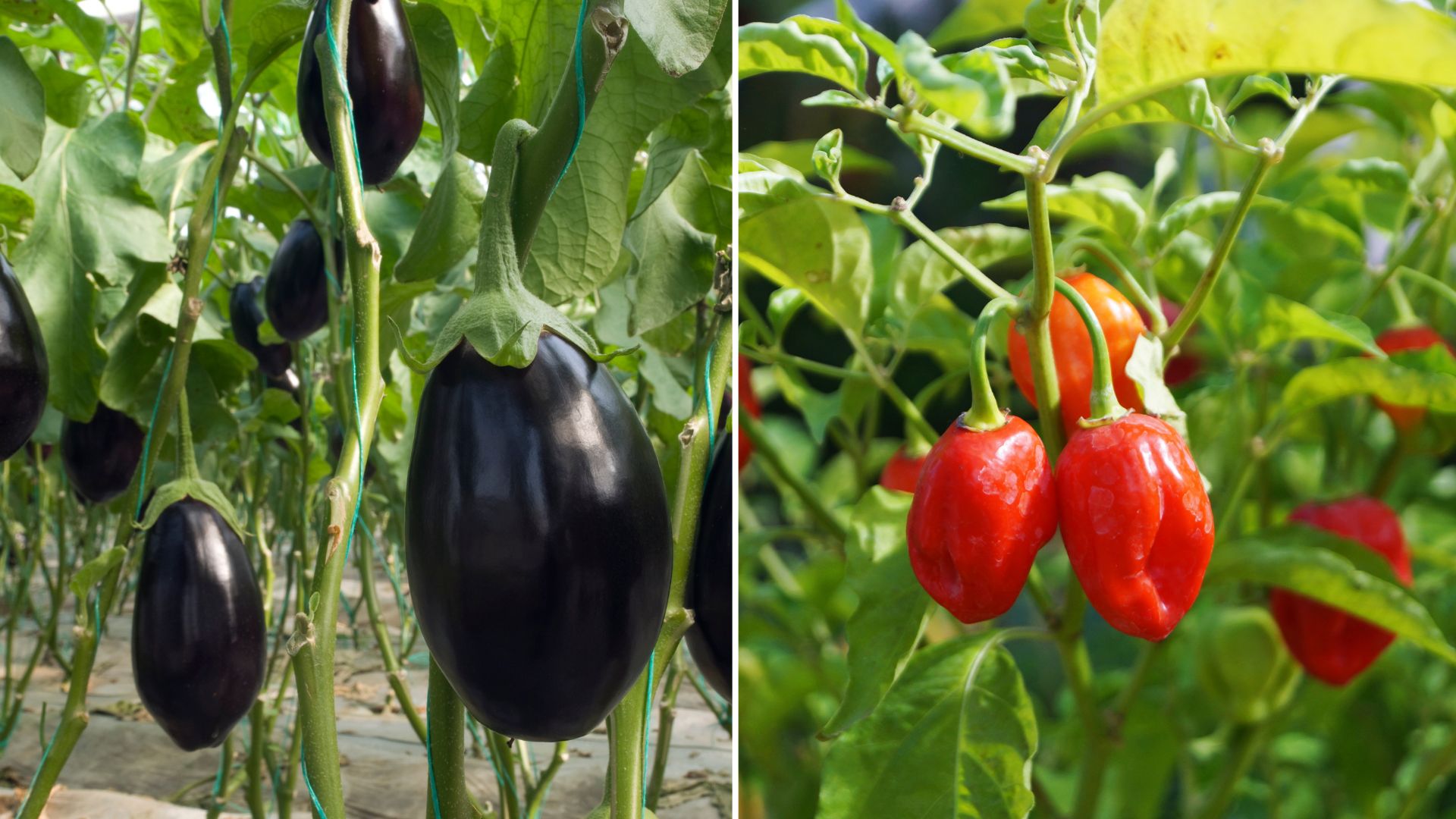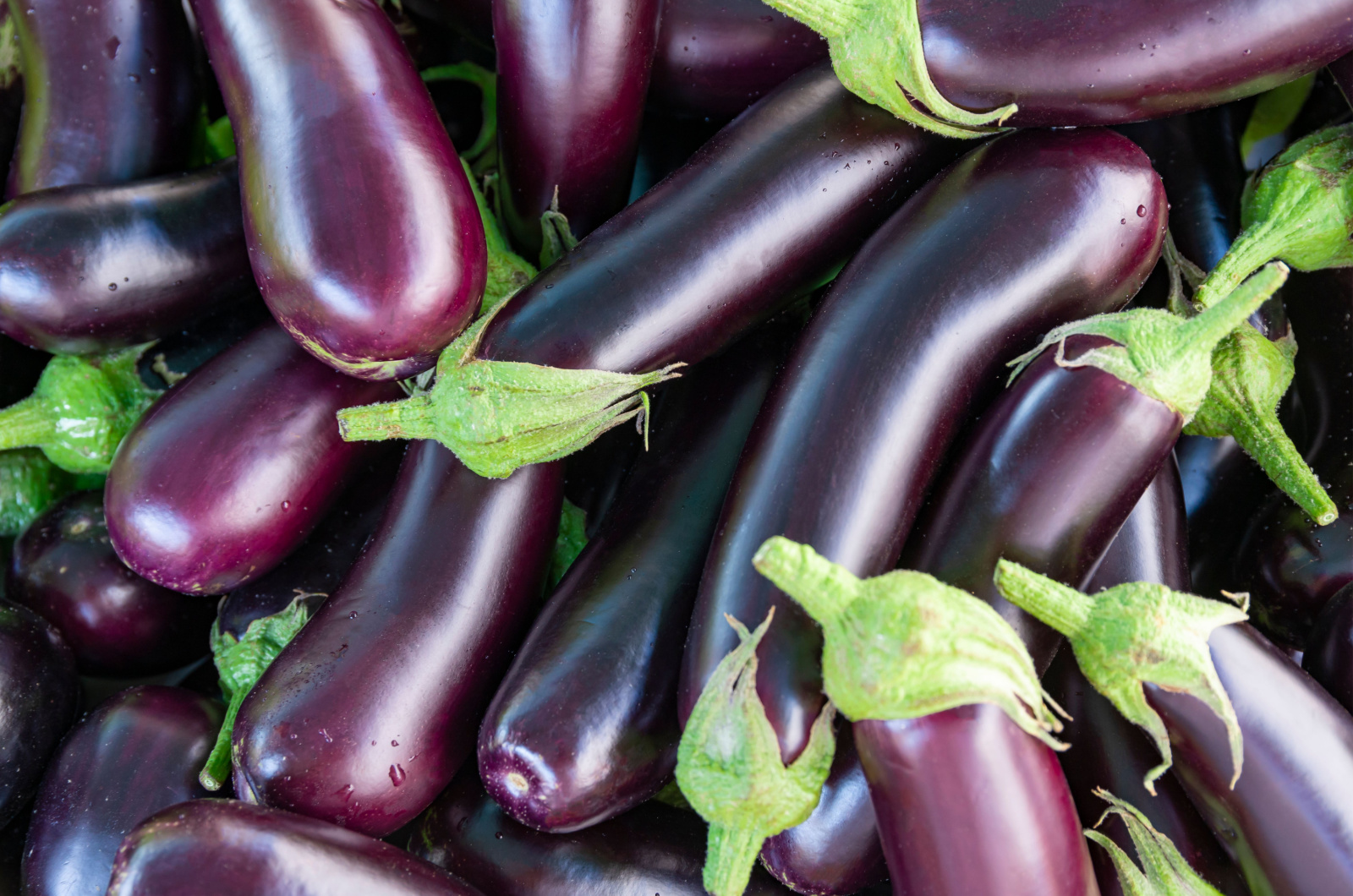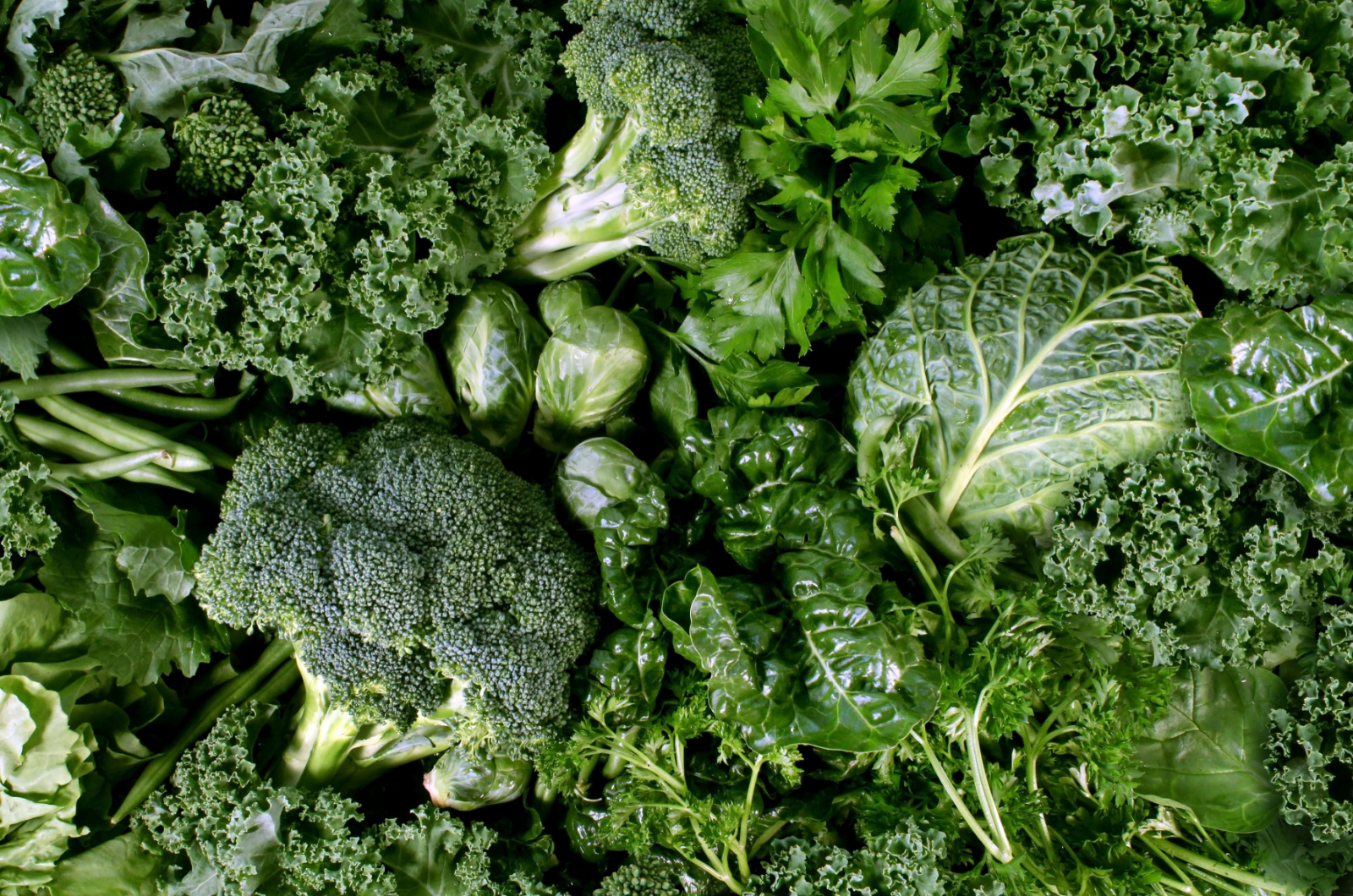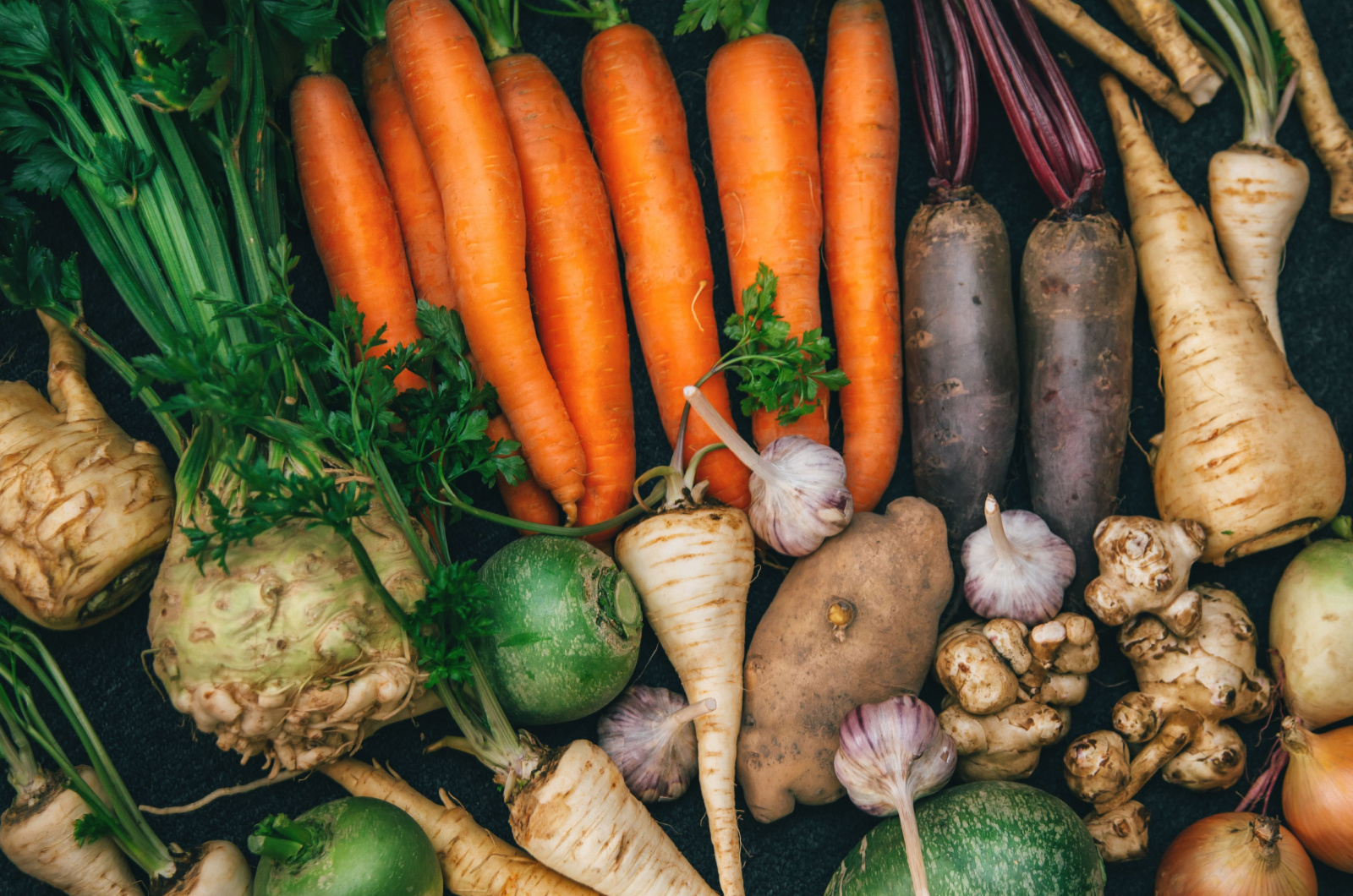Starting a greenhouse is a big decision because you have to make all sorts of preparations. First is building it, then choosing what to plant in it.
The first tip I’d give you about what to plant in your greenhouse is whether you like eating it or not. Just because something can grow in a greenhouse, doesn’t mean it should be grown there, especially if you don’t like that vegetable, fruit, or grain.
Then, try and find which of these plants are the easiest to grow and start with them. Plant a couple of species and go from there. It’s better to start small, so that you don’t feel overwhelmed at any point.
Here are 11 plants that are super easy to grow in greenhouses, so try a few!
1. Eggplants
Eggplants are an ideal plant for greenhouses because they love warm temperatures, something which you can easily maintain in this setup even during colder seasons.
Greenhouses offer them protection from harsh weather conditions, such as frost, strong winds, and heavy rains, which can all stunt the growth of these veggies.
Another reason why eggplants are perfect greenhouse plants is because you can extend their growing season and get a larger harvest by starting them earlier and harvesting them until late in the fall.
Additionally, you can grow eggplants closer together or even trellis them to save space and get a higher yield.
Just make sure to avoid common eggplant growing mistakes, and greenhouse eggplants will bear more fruit than you ever thought possible.
2. Garlic
You can have an endless supply of garlic at home by planting the largest bulbs in a container filled with well-drained potting mix.
There’s no reason why you shouldn’t be able to do this inside your home, although a couple of things make a greenhouse a much better option.
First of all, there won’t be any smell spreading throughout your house. Secondly, there’s no danger of your kids or pets breaking or bumping into the container, and soil and garlic heads flying everywhere.
Therefore, if you grow this vegetable in a greenhouse, there’s no risk of these things happening.
Additionally, garlic needs soil temperature between 40 and 50°F to grow, which is easily accomplished in a greenhouse. You don’t even have to heat it overwinter to grow this veg (although, it depends on which climate you live in).
Furthermore, the trouble of growing garlic outside is that you have to wait for fall to plant it for a summer harvest. You can eliminate this when growing it in a greenhouse because you can manipulate temperatures there.
Just make sure it gets plenty of sunlight or use grow lamps instead.
3. Leafy Greens
One of the reasons I love to grow leafy greens in a greenhouse is because you can easily prevent your lettuce from bolting (or any other variety you grow).
These vegetables are cool-weather crops and thrive in colder weather, meaning they flower prematurely once temperatures rise and obtain a bitter taste.
You can keep your lettuce, kale, spinach, Swiss chard, etc. sweet and delicious by planting them in a greenhouse any time of the year, as long as you can maintain cooler conditions.
In summer, that may mean getting an evaporative cooler, but in winter you can get away with heat mats just so they don’t get frozen. Or you might not even need any heater during winter, depending on your region.
Finally, leafy greens thrive when relative humidity is between 50-70%, which is easily obtainable in a greenhouse. In fact, your only worry might be that your humidity is too high, but using wetting agents on plastic or evaporative coolers should reduce it.
4. Mushrooms
Some of the best mushrooms for greenhouses include portobello, champignon, shiitake, cordyceps, morel, reishi, oyster, lion’s mane, etc.
Unlike other plants, mushrooms don’t require sunlight because they don’t photosynthesize. Therefore, they’re perfect for dark and cool corners of your greenhouse where nothing else will grow.
You can also stack mushrooms on the lowest shelves where there isn’t much sunlight and utilize your space even more.
Also, mushrooms love high humidity (between 85-95%) which frequently occurs in greenhouses. If you have other plants that can handle these conditions or you have a small greenhouse only meant for mushrooms, you can grow them without a problem.
They do require plenty of moisture, but you can install a greenhouse watering system that will irrigate them or you can water them deeply every other day.
The controlled environment you have in your greenhouse will eventually lead to higher mushroom yield, which is the end result of every grower.
5. Peas
Peas are a cool-season vegetable perfect for winter greenhouses. If you don’t live in freezing climates, you can grow it all year round without any heating.
You will have to cool your greenhouse in summer, but at that time, you can replace peas with other veggies.
The reason why gardeners grow this legume in a greenhouse is because they can extend its season and get a higher yield.
Greenhouses also offer more controlled watering, whether you’re using an automated irrigation system or a watering can. This is important for peas because they can get overwatered easily, especially if it rains, which will cause them to wilt, lead to root rot, and reduce your yield.
You’ll know exactly how much moisture your vegetable is getting and can reduce or increase it based on its state.
Additionally, greenhouse peas have better quality because you can control their growing environment in terms of temperature, lighting, humidity, and water.
Finally, these plants are self-pollinating, meaning they don’t need any help from outside in order to produce fruits.
P.S. You can try incorporating some pea companion plants to utilize more space and care for multiple plants at once, reducing the overall work you have to do.
6. Peppers
There are many types of pepper plants you can grow, and you don’t have to say goodbye to any variety just because it can’t grow in your climate.
With a greenhouse, you can provide it with the perfect conditions and grow them all year long.
These plants have a long growing season and just when they start producing, frost is there to stop them. You can avoid this by growing them in a heated greenhouse where they will yield you more fruit and prolong their season.
Greenhouses will protect them from harsh weather, such as frost, heavy rains, temperature changes, strong winds, etc.
Controlled conditions will also reduce the risk of pests because they usually attack stressed plants in warm and humid conditions.
Of course, greenhouses are humid, but if you get an evaporative cooler, you’ll easily resolve this issue.
And the best part is that you’ll be able to grow these veggies year round because peppers are perennials and will easily overwinter given the right conditions.
Also, peppers require pollination in order to produce fruit, but you can ensure more consistent pollination by doing it yourself so that every flower turns into fruit.
Finally, peppers are frequently victims of rabbit, bird, and snail attacks, all of which can be avoided by growing them in greenhouses.
7. Root Crops
Root crops include carrots, radishes, turnips, sweet potatoes, etc., and are all veggies suitable for greenhouses.
Radishes and other root vegetables are very sensitive to environmental stress in terms of increased temperatures and infrequent watering. (1)
Luckily, you can avoid these things by growing them in a greenhouse where you keep temperatures cool or warm enough for these crops to thrive.
Controlled watering will also ensure fast below-ground growth, whether you’re using automated irrigation or doing it by hand.
Additionally, you’ll extend their growing season by easily nurturing them during winter and get a higher yield.
You’ll keep your root crops safe from predators such as rabbits and deer and ensure their fast growth when planting them in greenhouses.
Just make sure to learn how to grow sweet potatoes, carrots, and other root vegetables so that you can keep greenhouse conditions to their liking.
8. Sunflowers
Believe it or not, you can grow sunflowers inside greenhouses and bring their beauty to your enclosed garden.
However, they are not your typical greenhouse plant due to their size and love of natural sunlight.
On the other hand, smaller varieties can grow in greenhouses provided you give them plenty of natural and artificial light.
You can control humidity, temperature, and air circulation much better in greenhouses, providing these flowers with ideal growing conditions.
Additionally, enclosed space will keep these plants safe from birds and squirrels, allowing you to harvest sunflower seeds after blooming without wondering whether there’s something left for you.
And if you don’t want to entrap these beauties and hide their grace, you can simply start sunflower seeds in your greenhouse where warm conditions will allow you to jump start the season.
Later, when the outdoor weather warms up enough, you can transplant them to your garden.
9. Strawberries
There are a few strawberry growing tips that will increase fruit quality and production, and you can easily follow them in greenhouses.
These fruit vines love temperatures between 68-75°F and exceeding them could lead to reduced fruit production. Luckily, it is easy to maintain these conditions in a greenhouse and increase your yield.
And the best part is that you don’t have to worry about late spring frost. You can plant strawberries very early in the season and enjoy them before your neighbors even put them in the ground.
Watering also becomes easier in a controlled setting. Strawberries require an inch of water per week while they establish and 1-2 inches weekly once they start producing fruits.
You can easily set your automated irrigation system to deliver this much moisture and prevent over or underwatering, increasing fruit quality.
And if you want the best strawberries and the highest yields, you can use grow lights to supplement natural light. That’s because these plants need about 10 hours of light per day for the best fruit production, something which can be tricky to achieve outdoors.
Greenhouses also keep strawberries safe from slugs, birds, rodents, insects, etc., ensuring each fruit is of the highest quality.
10. Tomatoes
Tomatoes are classic greenhouse plants, and the good news is that they grow easily when enclosed.
That’s because they love warm conditions and greenhouses provide just that. Additionally, it is the frost that stops the tomato production, something which you can completely avoid in greenhouses and increase your yield by and large.
Growing tomatoes in greenhouses offers more efficient pollination since you can do it yourself and ensure that every flower is pollinated and produces fruit.
Also, greenhouse tomatoes are less likely to suffer from blight and other fungal diseases, which makes your life a lot easier. Of course, it doesn’t mean that they’re resistant to this disease, so you still have to be vigilant.
Finally, pests have a harder time finding and infesting tomatoes in greenhouses, which is another plus of growing them this way.
Just make sure to use evaporative coolers to reduce humidity and prevent diseases and pests from attacking your plants.
P.S. You can stake your tomato plants to save space in your greenhouse and make your harvest a lot easier.
References:
1. McGill, L. (2018). Effect of Climate Change Conditions on Radish (Raphanus raphanistrum) Growth and its Implications on Crop Production. University of Michigan Biological Station.






